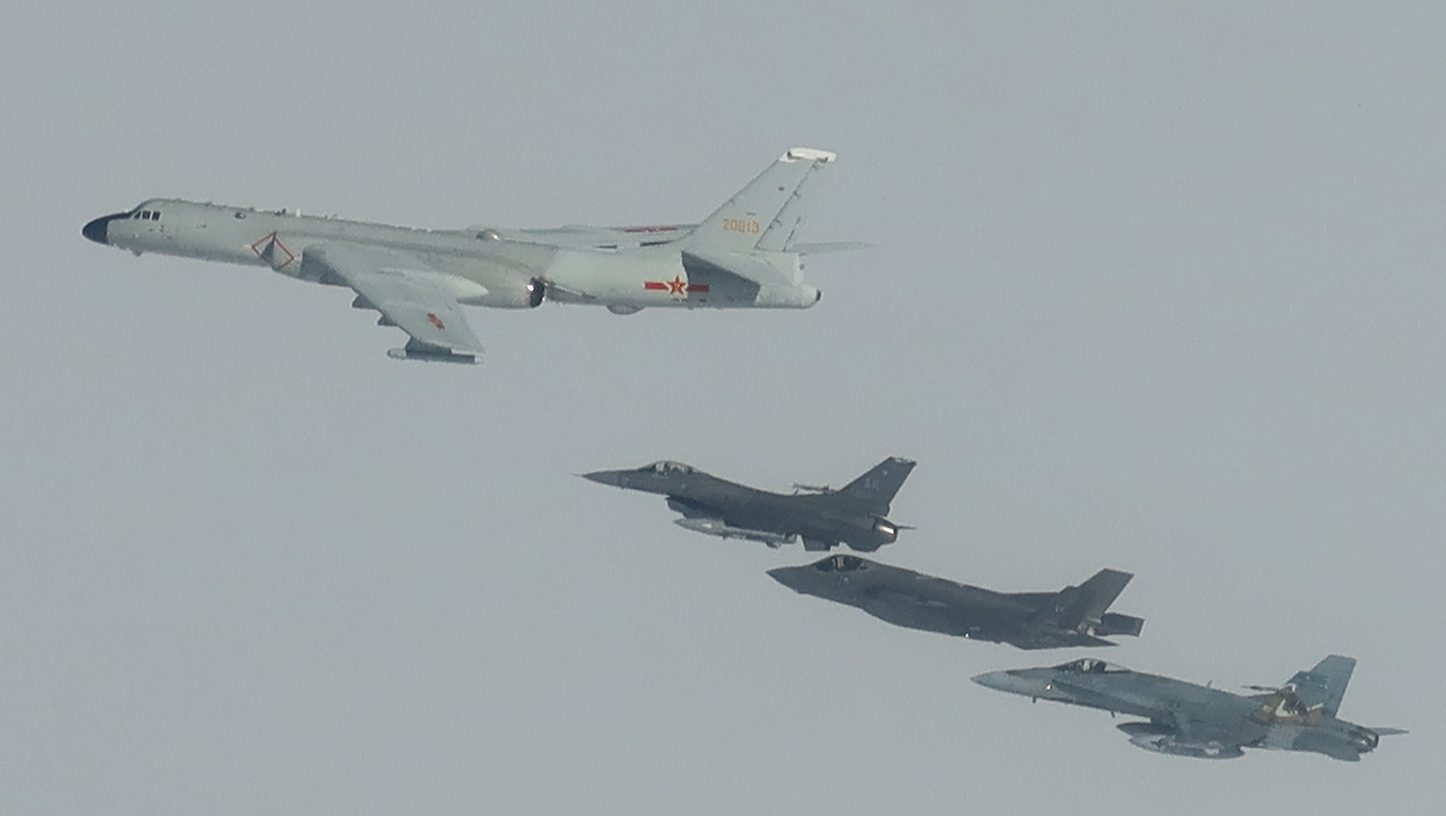

Three different types of U.S. and Canadian fighter aircraft were dispatched to intercept a rare joint formation of Russian and Chinese bombers as they buzzed near Alaskan airspace Wednesday, according to the Defense Department.
Russian bombers are no stranger to Alaskan air defenders, but Wednesday marked the first appearance of Chinese aircraft in the Alaska ADIZ, a defense official said.
Two F-35s, F-16s, and Canadian CF-18s – six aircraft total – were involved in Wednesday’s intercept of the two Russian TU-95 and two Chinese PRC H-6 bombers, according to pictures posted on the Defense Visual Information Distribution Service. Wednesday’s intercept took place in the Alaska Air Defense Identification Zone, or ADIZ, an area of international airspace in which aircraft must be identified for national security reasons, according to a news release from the North American Aerospace Defense Command, or NORAD.
“The Russian and PRC [People’s Republic of China] aircraft remained in international airspace and did not enter American or Canadian sovereign airspace,” the news release says. “This Russian and PRC activity in the Alaska ADIZ is not seen as a threat, and NORAD will continue to monitor competitor activity near North America and meet presence with presence.”
Though the three types of fighters made a striking show of force, a fourth Alaska fighter assigned to NORAD is missing. The pictures do not show any F-22s taking part in the intercept even though the aircraft are based at Joint Base Elmendorf-Richardson, Alaska. Alaskan Raptors downed two of the three mystery balloons during the post-Chinese spy balloon panic of 2023.
Subscribe to Task & Purpose today. Get the latest military news and culture in your inbox daily.
The intercept took place about 200 miles off the coast of Alaska, Defense Secretary Lloyd Austin told reporters during a Pentagon news conference on Thursday, though officials did not specify in what region of Alaska’s 1000-mile coastline.
“This was not a surprise to us,” Austin said. “We closely monitored these aircraft, tracked the aircraft, intercepted the aircraft – which demonstrates that our forces are at the ready all the time and we have very good surveillance capabilities. And if it happens again, if there is any kind of a challenge from any direction, I have every confidence that NORTHCOM [U.S. Northern Command] and NORAD will be at the ready and will be able to intercept.”
The U.S. and Canadian fighters on the intercept are dispatched through a long chain of radars and logistics pieces spread across Alaska, involving troops from the active duty Air Force, Alaska Air National Guard and Canada. The U.S. fighters that intercept foreign planes are flown by active-duty pilots stationed at both JBER near Anchorage and Eielson Air Force Base outside Fairbanks. Those planes are dispatched by Alaska Air National Guard radar watchers in Anchorage, and refueled during their intercept flights — which can be far behind the fighters’ unsupported range — with specially-equipped cold-weather KC-135 tankers from the Guard’s 168th wing at Eielson.
Austin added that this is the first time the U.S. military has tracked the Russian and Chinese flying together in such a mission. U.S. government officials have long been concerned about the relationship between the two countries, especially Chinese support for Russia’s invasion of Ukraine.
During the Cold War, the Soviet Union and China were initially allies, but relations soured, and the two countries fought an undeclared border war in 1969. Starting under President Richard Nixon, the United States was able to break the Sino-Soviet alliance and develop close relations with China.
But in the 21st Century, China emerged as the Defense Department’s top adversary, while Russian President Vladimir Putin and Chinese President Xi Jinping have formed a close partnership to counter the United States and other Western countries.
“We’ll see what happens and how this relationship continues to develop,” Austin told reporters on Thursday. “We will remain focused on protecting the homeland here.”
The joint Russian and Chinese mission off Alaska comes at a time of political upheaval within the United States. President Joe Biden recently announced that he will not run for president in November’s general election. Former President Donald Trump, the Republican nominee for president, narrowly escaped death during an attempted assassination earlier this month.
When asked if China and other adversaries may be testing the United States, Austin said, “They’re always testing us, and that’s no surprise to any of us.”
It is likely that the mission was planned “well in advance,” said Austin, who added that only the Chinese and Russians could say why they scheduled the flight for Wednesday.
“In terms of the message that the Russians and Chinese are sending, I’ll tell you what message we’re sending; and that message is: We’re going to be at the ready; we are at the ready; we will always be at the ready,” Austin said. “We’re going to defend this nation.”
The latest on Task & Purpose
- What does Project 2025 mean for military veterans?
- Air Force colonel fired at Eglin Air Force Base 3 days before command change
- J.D. Vance is first veteran on Presidential ticket since John McCain
- Marine recruit loses more than 100 pounds to graduate from boot camp
- Project 2025’s plan for the US military
